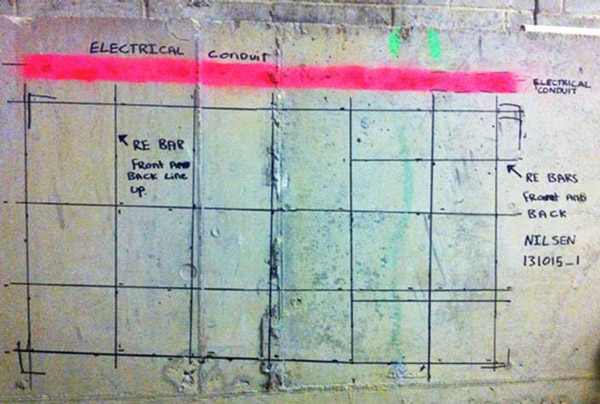Concrete Scanning: An Essential Action In The Direction Of Making Certain Architectural Honesty and Safety And Security
In the world of construction and infrastructure maintenance, the value of concrete scanning can not be overemphasized. By using sophisticated modern technology and methodologies, concrete scanning serves as a crucial device in making certain that the integrity and safety of structures and bridges are supported to the greatest requirements.
Importance of Concrete Scanning
Concrete scanning plays a vital duty in making sure the architectural integrity and safety of buildings and facilities tasks. By making use of innovative technologies such as ground-penetrating radar (GPR) and electromagnetic induction, professionals can non-destructively check concrete structures to spot possible flaws, spaces, embedded items, and support format. This process enables very early discovery of abnormalities that might jeopardize the security of a structure, avoiding expensive damages and ensuring the safety and security of passengers.
Concrete scanning is especially essential during the planning and construction stages of a task. Prior to exploration, cutting, or coring right into concrete, scanning assists determine the precise places of rebar, post-tension cable televisions, and various other embedded components, lowering the threat of accidental hits that could bring about architectural weak points. Furthermore, concrete scanning help in quality control by validating the density of concrete covers and finding any discrepancies that might influence the general longevity of the structure. Ultimately, buying concrete scanning solutions is not only a positive procedure to alleviate threats yet likewise a basic action towards keeping the long-lasting safety and security of structures and framework.
Technology for Concrete Examination

Benefits of Early Detection
Prompt discovery of architectural issues can substantially alleviate dangers and guarantee the longevity of construction jobs. By determining potential problems beforehand in the building and construction procedure, stakeholders can take positive actions to deal with concerns before they rise into larger and a lot more expensive problems. One of the vital advantages of very early detection is the avoidance of architectural failings, which can pose severe security risks and result in project hold-ups and financial losses.
In addition, very early detection enables for timely repair work and upkeep, which can aid extend the life expectancy of the structure. By resolving issues without delay, construction teams can avoid pricey repair services and even the demand for early replacement of structural components. This positive method not only saves money and time but also enhances the total security and sturdiness of the building and construction project.
In addition, very early detection can enhance job planning and decision-making by giving stakeholders with beneficial insights into the condition of the framework. Equipped with this information, job managers can make enlightened options Your Domain Name relating to building techniques, timelines, and materials, bring about extra effective and reliable job results.
Ensuring Architectural Security
Making certain the structural stability of a construction project is critical to its safety and security and long life. Structural security refers to the capability of a building or infrastructure to preserve its form and function under numerous tons and environmental problems. To achieve this, thorough assessment and surveillance of the framework are necessary. Concrete scanning plays an essential role in making sure structural security by identifying possible issues such as gaps, delamination, or reinforcement deterioration that could jeopardize the integrity of the structure gradually.
By using advanced scanning technologies like ground-penetrating radar (GPR) and electro-magnetic induction, construction professionals can non-invasively inspect concrete structures to identify areas of problem below the surface. This proactive technique permits for the very early detection of defects or weak points, allowing prompt fixings or support to avoid structural failings.
Normal concrete scanning throughout different building and construction stages and throughout the life process of a structure can aid maintain its security, alleviate dangers, and guarantee the safety and security of owners. By prioritizing architectural security via concrete scanning, construction projects can enhance their strength and longevity, ultimately adding to better security and durability.
Avoiding Important Failings
To guard versus tragic events, careful tracking and proactive maintenance are essential in avoiding crucial failings within architectural frameworks. Detecting possible problems prior to they rise is key to stop structural failures. Applying regular evaluations, such as concrete scanning, can reveal surprise defects like voids, fractures, or rust that might compromise the integrity of a structure. By making use of advanced scanning technologies like Ground Passing through Radar (GPR) or Concrete X-ray, designers can non-destructively assess the condition of concrete and determine weak points that need reinforcement or repair service - RainierGPR Service Areas.

Verdict
To conclude, concrete scanning plays a vital function in making sure structural stability and security by using innovative innovation for early detection of possible concerns. This proactive technique aids prevent essential failures and guarantees the security of structures. It is vital to prioritize concrete assessment as a conventional technique to safeguard the durability and security of buildings and facilities.
Concrete scanning plays a critical role in guaranteeing the architectural integrity and safety of buildings and infrastructure projects. Additionally, concrete scanning aids in quality control by verifying the thickness of concrete covers and detecting any type of discrepancies that might affect the general sturdiness of the framework. Concrete scanning plays a vital function in making sure architectural stability by finding prospective issues such as spaces, delamination, or support corrosion that can endanger the honesty of the framework over time.

In final thought, concrete scanning plays a vital function in guaranteeing structural integrity and security by making use of advanced modern technology for early detection of prospective problems.
Comments on “RainierGPR Service Areas: Comprehensive Protection for Concrete Scanning”